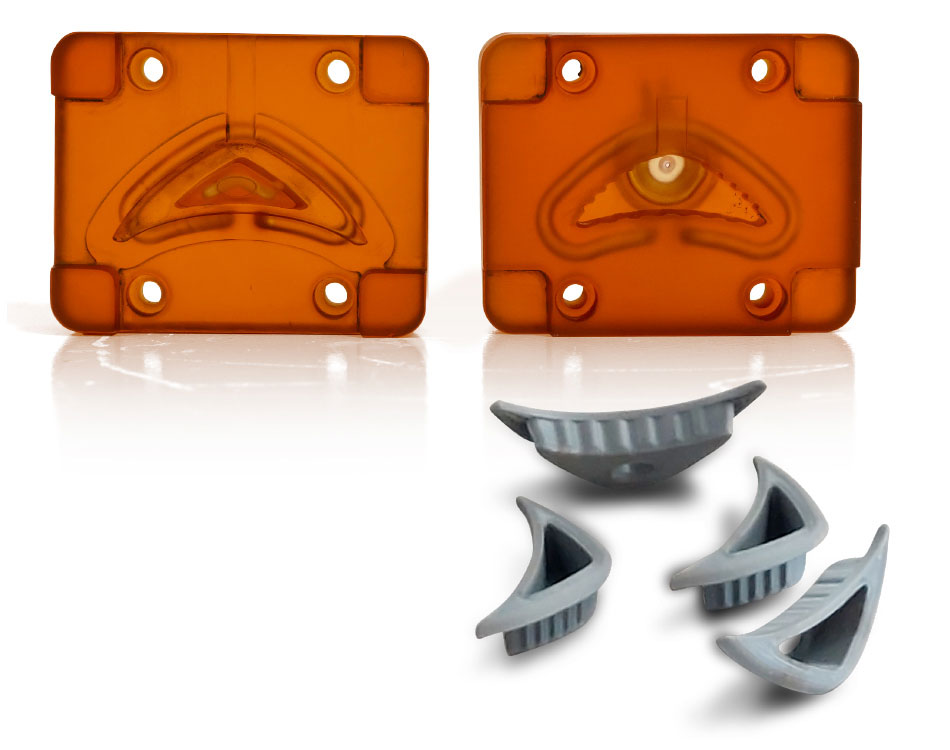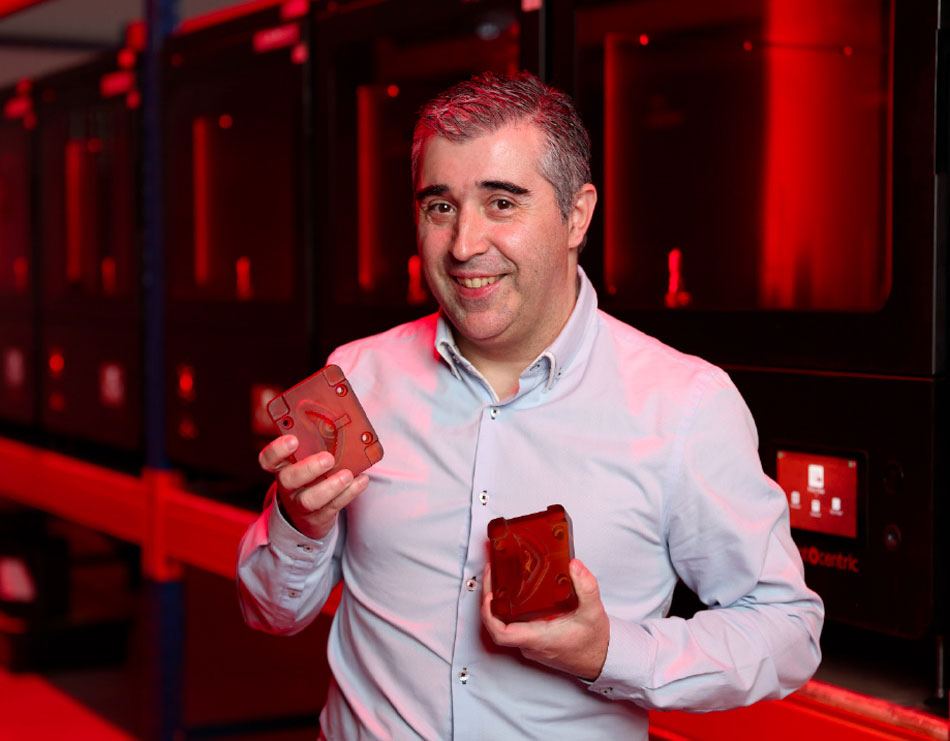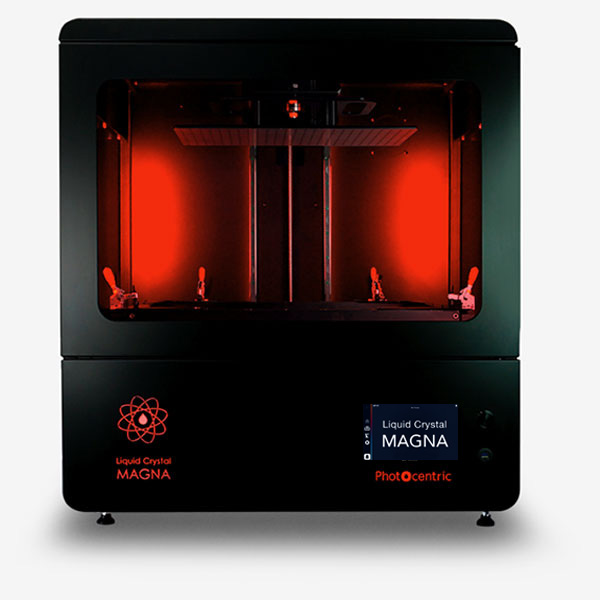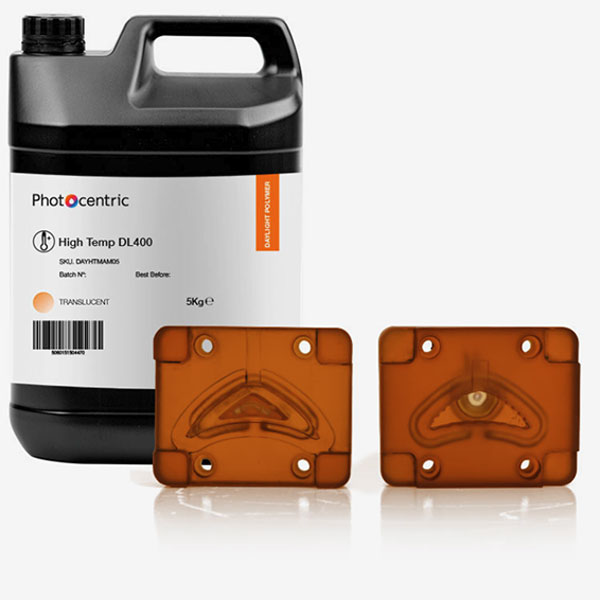
Fast-track Mould Making with Additive Manufacturing
From Costly Injection Moulding to
fast 3D Printing
Providing quality moulds to advanced manufacturers in the metalworking industry for a variety of applications is the core business of Tetralogia’s customer. They were looking for a solution that could shorten lead times and save manufacturing costs as competition was fierce. Turnaround and cost per mould are key to the client’s business and often customers’ deciding factor between getting the job or not. Tetralogia helped them become more competitive through the implementation of Photocentric’s technology.
As part of their metal works, Tetralogia’s customer is required to supply polypropylene plastic profile tops, according to the specific design of the part they create. The challenge they had was to add more value to their customers and become more competitive. In order to achieve that, they knew they had to think outside the box; that’s how they started exploring alternative methods of manufacturing their plastic tops.

Benefits
Part Customisation
Ability to cost-effectively customise each individual part. Tetralogia took advantage of this and decided to keep the aluminium mould structure, but individualise each design, so the interior was printed with a unique core and cavities for each mould.
Design Optimisation
Modify the design and validate it again
giving them the ability to quickly run these
iterations and get immediate feedback
results in an optimised design.
Quick turnaround and control of supply chain
Lead time was reduced from 3-4 weeks to 2 1/2 days with the use of 3D printing.
Competitive advantage through
cost savings
In just 48 hours, they can now validate, modify the design and validate it again without incurring expensive tooling costs and reduce lead times to 30% compared to injection moulding.
Challenge
In the past, Tetralogia’s customer was using Injection Moulding (IM) technology to produce aluminium moulds in short runs of 1,000-3,000 parts or steel moulds in large productions of many tens of thousands. Tetralogia’s customer decided to invest in IM by bringing in-house machinery to produce moulds.
When they made aluminium moulds, the parts were injected at temperatures of 220-230°C applying low pressure. The process of manufacturing a mould using aluminium for a profile top, took between 3 to 4 weeks, after approval of the design of the plastic part. The average cost of the mould was between €8,000 and €12,000.
The profile tops had simple designs but were critical for the completion and delivery of the metal parts. The lead times of producing the moulds were hindering orders getting out of the door and it was becoming increasingly difficult to win new business due to increasing competition.
Solution & Result
Tetralogia offered the customer an innovative approach to minimize costs; they proposed to carry on using the same mould frame but suggested to make it using additive manufacturing, in particular Photocentric LC Magna and High Temp DL400 resin.
One of 3D printing’s most coveted benefits is the ability to cost effectively customise each individual part. Tetralogia took advantage of this and decided to keep the aluminium mould structure, but individualise each design, so the interior was printed with a unique core and cavities for each mould.
The customer found tangible advantages with Photocentric’s technology in comparison to other methods providing a greater competitive advantage than they had imagined. They discovered when using the Liquid Crystal Magna 3D printer, they were reducing lead times to 30% compared to Injection Moulding (IM).
In just 48 hours, they can now validate, modify the design and validate it again giving them the ability to quickly run these iterations and get immediate feedback results in an optimised design without incurring expensive tooling costs.
For production runs larger than 1,000 or 2,000, the customer will have to make the core and cavity again – this is ideal to fine tune the design and improve the original concept.
The customer tested several of Photocentric’s photopolymers and opted for the HighTemp DL400 resin due to its high-performance properties, suiting the specifications of temperature resistance that the part required. Tetralogia began immediately the production process.
“We could not believe the huge savings brought by 3D printing. The cost of Photocentric’s technology was 80-90% cheaper, a far cry from expensive Injection Moulding costs, even for larger injection series where savings will still be around the 60-70% mark. Equally astonishing was the shorter life cycles, we saved 30% on lead times”
Tetralogia’s Customer
Carlos experience in the mould industry quickly
confirmed that Liquid Crystal Magna was the right
3D printer for this job.
Carlos Santos
CEO of Tetralogia

Project Timeline
Day 1
- Design Optimisation 100%
Design
Tetralogia worked with the customer’s designer to optimise the 3D model looking at cooling and resistance effects.
Day 2
- 3D Printing process 100%
Printing
Tetralogia received a 3D STEP file including the Core and Cavity parts and started the 3D printing process right away by:
1. Making an STL with 0.02mm tolerance
2. Setting up supports in Photocentric studio outside the embossing zone
3. Exporting Photocentric’s proprietary file with 50microns
4. Preparing the resin according to TDS (High Temp DL400)
5. Printing process for 12-14 hours
Day 3
- Post-processing. Wash and Cure 50%
Post-processing
The construction process was completed and the
post-processing started:
1. Washing and curing according to TDS (HighTemp DL400)
2. Removing the supports and sanding where necessary to ensure that the mould adjusted well where the core and the cavity meet after the CNC milling
3. Boring the ejectors with tolerance h7 directly on the printed final part

Liquid Crystal Magna
High-resolution, industrial-grade LCD 3D printer, designed for precision and production efficiency.

High Temp DL400
HighTemp DL400 is the first Photocentric temperature resistant resin possessing superior properties of both strength and stiffness